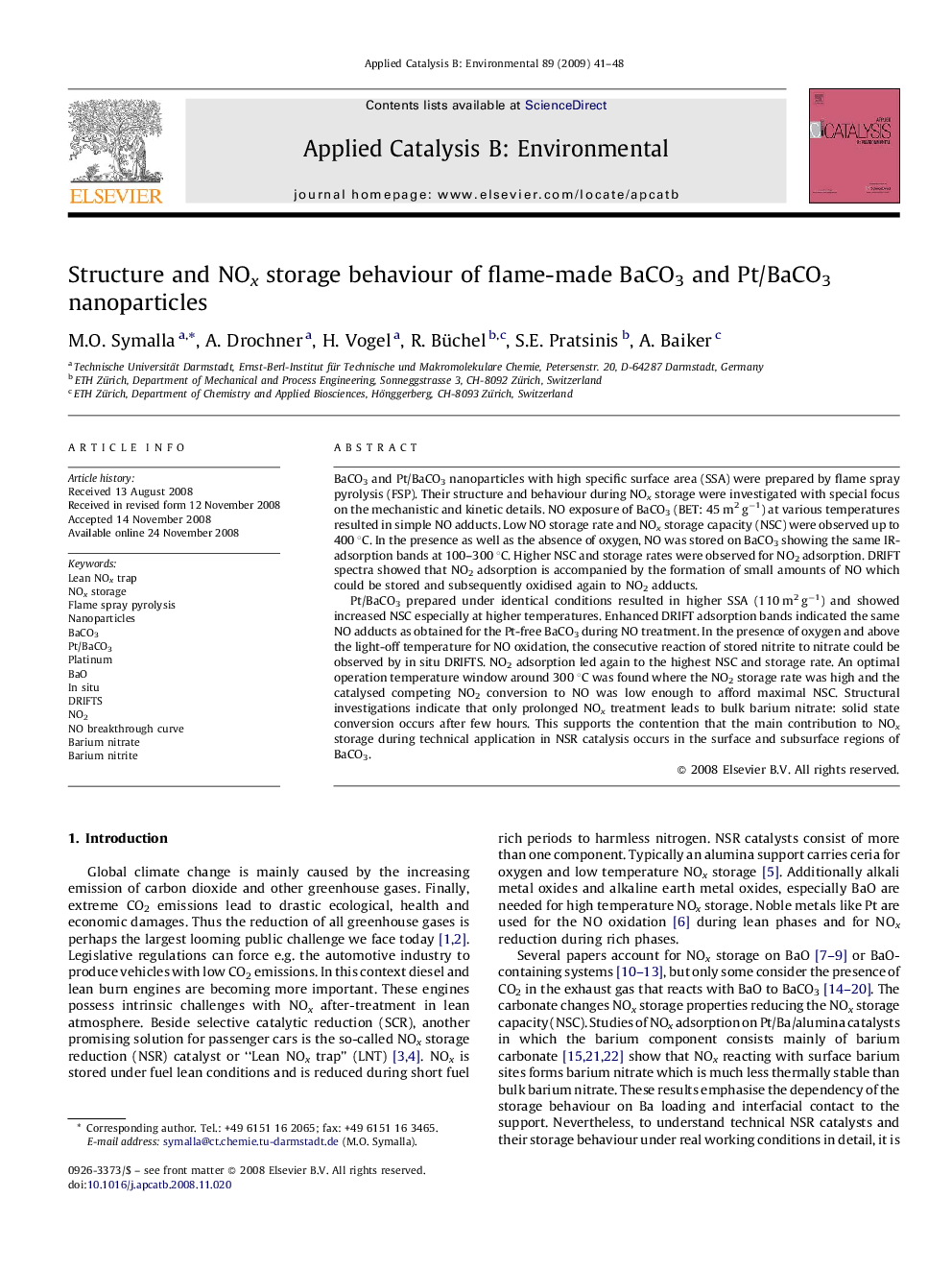| Article ID | Journal | Published Year | Pages | File Type |
|---|---|---|---|---|
| 47832 | Applied Catalysis B: Environmental | 2009 | 8 Pages |
BaCO3 and Pt/BaCO3 nanoparticles with high specific surface area (SSA) were prepared by flame spray pyrolysis (FSP). Their structure and behaviour during NOx storage were investigated with special focus on the mechanistic and kinetic details. NO exposure of BaCO3 (BET: 45 m2 g−1) at various temperatures resulted in simple NO adducts. Low NO storage rate and NOx storage capacity (NSC) were observed up to 400 °C. In the presence as well as the absence of oxygen, NO was stored on BaCO3 showing the same IR-adsorption bands at 100–300 °C. Higher NSC and storage rates were observed for NO2 adsorption. DRIFT spectra showed that NO2 adsorption is accompanied by the formation of small amounts of NO which could be stored and subsequently oxidised again to NO2 adducts.Pt/BaCO3 prepared under identical conditions resulted in higher SSA (110 m2 g−1) and showed increased NSC especially at higher temperatures. Enhanced DRIFT adsorption bands indicated the same NO adducts as obtained for the Pt-free BaCO3 during NO treatment. In the presence of oxygen and above the light-off temperature for NO oxidation, the consecutive reaction of stored nitrite to nitrate could be observed by in situ DRIFTS. NO2 adsorption led again to the highest NSC and storage rate. An optimal operation temperature window around 300 °C was found where the NO2 storage rate was high and the catalysed competing NO2 conversion to NO was low enough to afford maximal NSC. Structural investigations indicate that only prolonged NOx treatment leads to bulk barium nitrate: solid state conversion occurs after few hours. This supports the contention that the main contribution to NOx storage during technical application in NSR catalysis occurs in the surface and subsurface regions of BaCO3.
